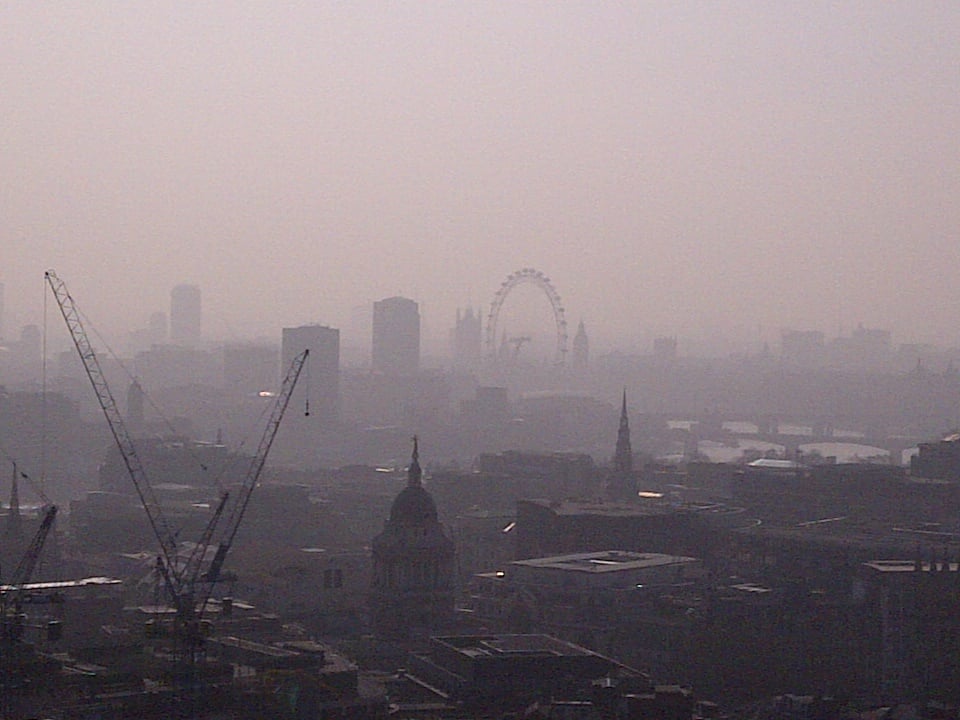Time extensions for nitrogen dioxide (NO2) have been breached already in Leicester, North Wales, Nottingham and Portsmouth
Worsening in each of the last three years of one of the most important determinants of public health i.e. exposure to fine particles (PM2.5)
‘Clean Air in London’ calls on Commissioner Potočnik to launch infraction against the UK
The UK has submitted its official report to the European Commission (Commission) today confirming widespread breaches of air pollution laws across the UK in 2011. Details can be seen at:
http://cdr.eionet.europa.eu/gb/eu/annualair/envugvtza
Simon Birkett, Founder and Director of Clean Air in London, said:
“Today’s report is the last step before the European Commission (Commission) can launch infraction action against the UK for widespread breaches of air pollution laws across the UK.
“Key points include:
- 35 of 43 UK zones have breached nitrogen dioxide (NO2) limit values in 2011 which have been in legislation since 1999 to be complied with by January 2010 (affecting 396,490 people in background locations alone i.e. no attempt has been made by the Government to assess population exposure at the roadside) [Note: amended by the Government on 23 October 2012 to 440,439 people in London];
- the time extensions granted by the European Commission in June 2012 for Leicester, North Wales, Nottingham and Portsmouth to comply with the NO2 limit values have already been breached;
- international health standards have been exceeded for exposure to benzo(a)pyrene (291,332 people affected), nickel (3,251 people affected) and ozone (millions of people affected);
- ‘sea salt’ is blamed for a breach of the daily limit value for dangerous airborne particles (PM10) in the West Midlands (i.e. Shropshire, Herefordshire, Staffordshire, Warwickshire and Worcestershire) in an effort to avoid reporting a legal breach there; and
- the Average Exposure Indicator, which measures population weighted exposure to the most dangerous fine particles (PM2.5), has worsened from 12.5 micrograms per cubic metre (ug/m3) in 2009 to 13.0 (ug/m3) in 2010 and 13.5 (ug/m3) in 2011. The average over three years of 13.0 ug/m3 triggers a threshold requiring a 15% reduction by 2020.
“Enough’s enough. Clean Air in London (CAL) calls on Commissioner Potočnik to launch infraction urgently against the UK prioritising the 16 zones for which no time extension was sought for NO2 (including London) and the four zones which have already breached the terms of time extensions granted for NO2 just four months ago. CAL also urges Commissioner Potočnik to launch infraction against the UK for obtaining unlawfully its time extension to comply with the PM10 daily limit value in London and breaching it anyway in Neasden Lane in Brent.
“The most important revelation is not the extent of legal breaches, extraordinary as they are, but the worsening in each of the last three years of one of the most important determinants of public health i.e. exposure to fine particles which the Committee on the Medical Effects of Air Pollution estimated was responsible for 29,000 attributable deaths in the UK in 2008 alone.”
Notes
The 2011 results have been summarised by the UK Government as follows:
1. There were no exceedances of any EU limit values for sulphur dioxide (SO2).
2. The UK exceeded the limit value for hourly mean nitrogen dioxide (NO2) in three zones (out of the total of 43).
3. The UK exceeded the limit value for annual mean NO2 in 40 zones.
4. Of these 40 zones, nine were covered by a time extension during 2011; in these cases, the limit value plus a margin of tolerance applied. Five of the nine zones were within the margin of tolerance. Therefore, the number of zones that exceeded the limit value for annual mean NO2, plus margin of tolerance where applicable, was 35.
5. One zone (London) exceeded the daily limit value for dangerous airborne particles (PM10) during the year, after subtraction of the contribution from natural sources. A time extension has been granted in respect of this zone and limit value and a margin of tolerance is in force. The limit value plus margin of tolerance was not exceeded in 2011.
6. All zones met the limit value for annual mean concentration of PM10 particulate matter.
7. All zones met the target value for annual mean concentration of PM2.5 particulate matter, and the Stage 1 limit value, which comes into force in 2015. After subtraction of the natural contribution, two zones did not meet the Stage 2 limit value which must be met by 2020.
8. Exceedances were reported for the long term ozone objective for human health in all 43 zones, and exceedances were reported for the long term ozone objective for vegetation in three zones.
http://en.wikipedia.org/wiki/Ozone
9. Two zones exceeded the target value for nickel in 2011, as was the case in years 2008 to 2010.
http://en.wikipedia.org/wiki/Nickel
10. Seven zones exceeded the target value for benzo[a]pyrene in 2011 (compared with eight in 2010).
http://en.wikipedia.org/wiki/Benzo(a)pyrene
ENDS
CAL 187 UK non-compliance report 280912
CAL 206 UK AQ Zones and AQ_Updated draft 051012
CAL 155 Copy of Marginal Seats and AQ 141111
CAL 206 ukquestionnaire_v5_2011_20121008_Published 23 October 2013_Benzo a pyrene
CAL 206 ukquestionnaire_v5_2011_20121008_Published 23 October 2012_Nickel
CAL 206 ukquestionnaire_v5_2011_20121008_Published 23 October 2012_NO2
CAL 206 ukquestionnaire_v5_2011_20121008_Published 23 October 2012_O3
http://cdr.eionet.europa.eu/gb/eu/eiodata/envumiomg
CAL 230 NGO joint position paper with logos 050313
CAL 251 Particulate matter from natural sources and related reporting_EEA 110712










